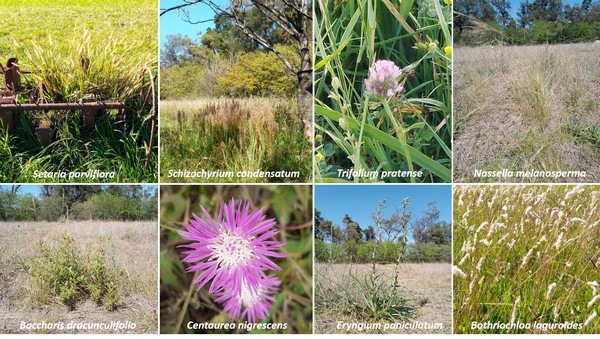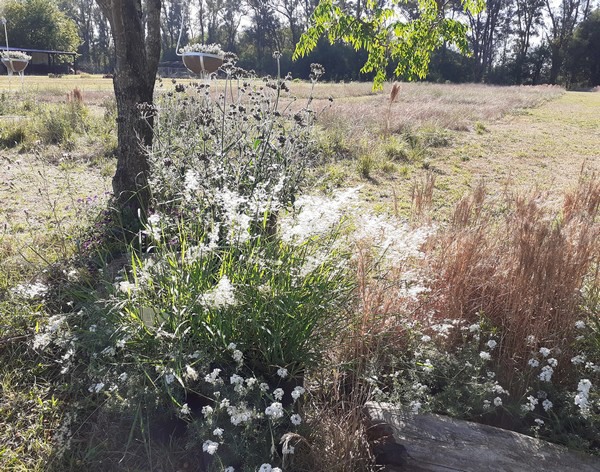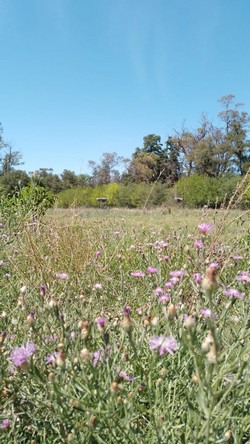Sustainable landscaping proposes systems that reduce energy consumption, minimizing the carbon footprint. The possibility of replacing the traditional lawn with an ornamental meadow composed of spontaneous, native, and non-native vegetation constitutes one of the most beneficial design opportunities for the environment. These systems require less investment in maintenance by reducing the energy involved in the periodic mowing of the grass, its fertilization, and watering. In addition, this kind of environment increases the supply of food and provides shelter for insects and small animals, favoring biodiversity.

In Argentina, this topic opens a new line of research in which spontaneous vegetation is being studied, and plants with ornamental potential are selected. Some of the species selected so far were Baccharis dracunculifolia, Schizachyrium condensatum, Nassella melanosperma, Agrostis montevidensis, Centaurea nigrescens and Setaria parviflora. Among the studies carried out, Verónica Bugallo and Gabriela Facciuto of Instituto de Floricultura, INTA, analyzed the possibility of sexual and vegetative propagation and phenotypical aspects and initiated Genetic Improvement work.

In addition, they edit some plots planting among the spontaneous vegetation, native species, and INTA varieties. Among the Argentinean plants evaluated were Salvia coccinea, S. cardiophylla, S. pallida, S. uliginosa, two species of Gomphrena sp. and, among the varieties, Glandularia "Alba INTA", G. "Extrema Roja INTA", Nierembergia "Yvoti Blanca INTA" and N. "Yvoti Lila INTA."

Selected grasses are also being studied in the spontaneous meadow and during collecting trips in various provinces of Argentina, some of them are Melinis repens, Stapfochloa elata, Eustachys distichophylla, Agrostis montevidensis, and Deyeuxia viridiflavescens, which stand out for their showy inflorescences.
The work carried out in this first stage of research will provide information on some of the spontaneous species that would already be adapted to this type of system and on the possibility of including some of the materials that are already available on the market. These investigations open up a new range of possibilities to offer, in the future, to consumers and landscapers.
For more information:
Instituto de Floricultura, INTA
inta.gob.ar/floricultura/
Facebook: Instituto.de.Floricultura.INTA
